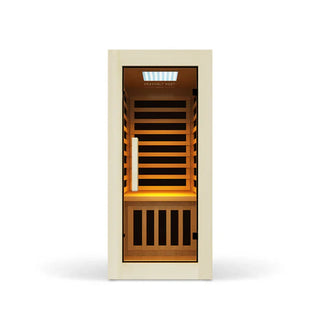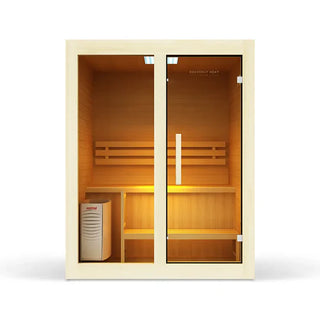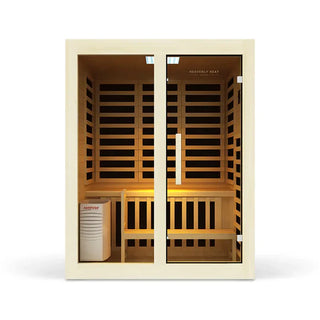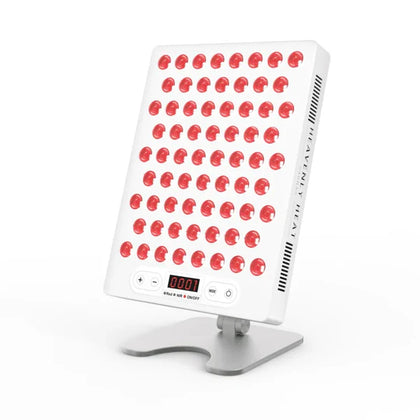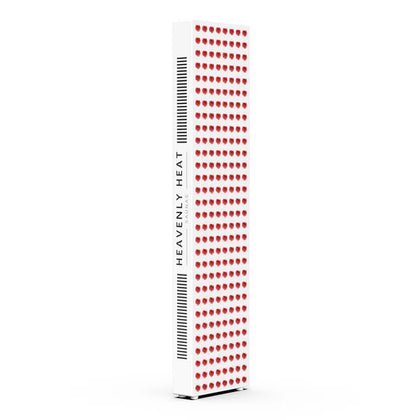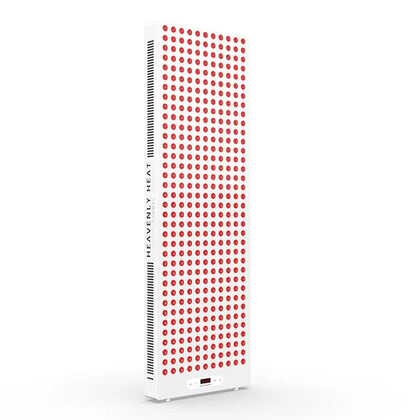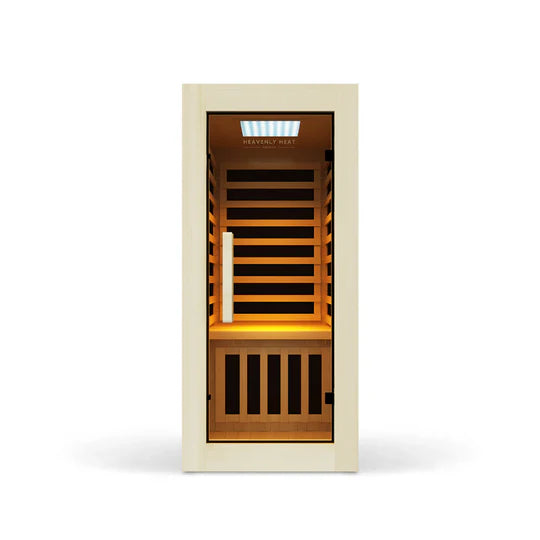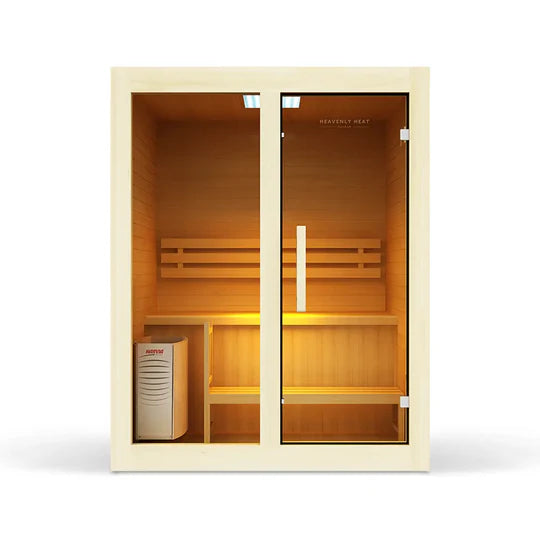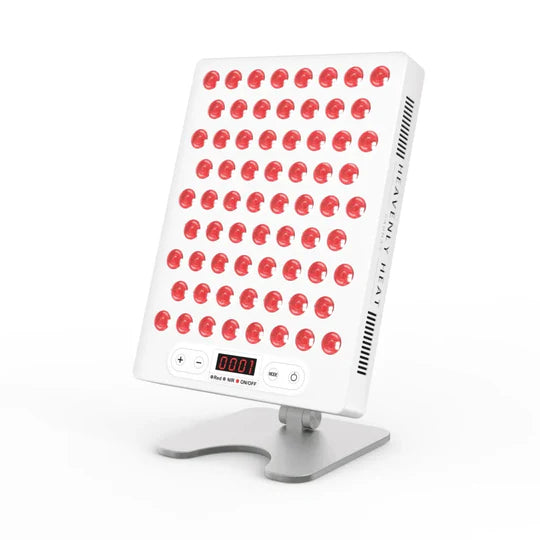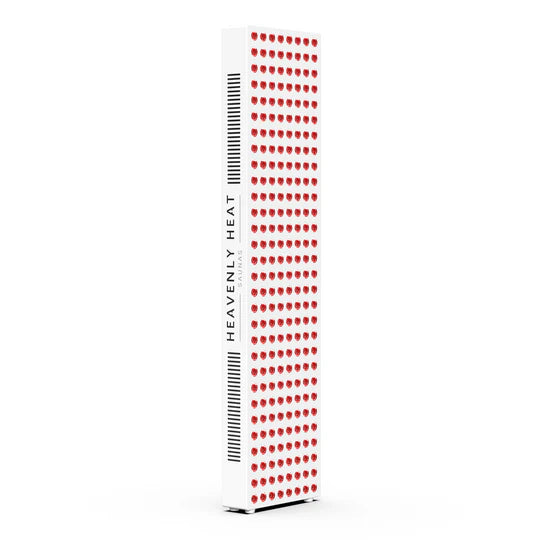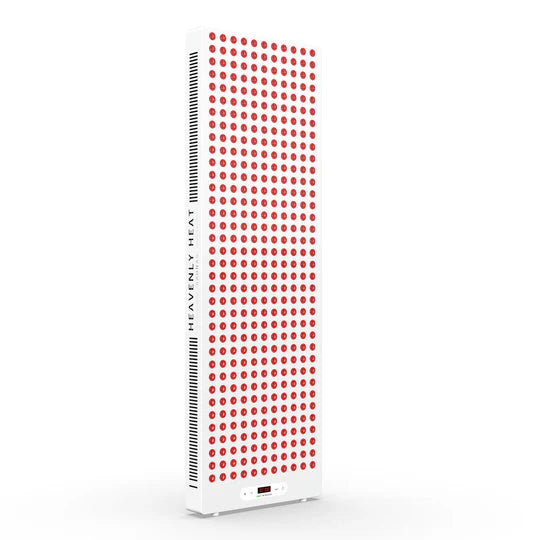Can you do red light therapy after dermaplaning?
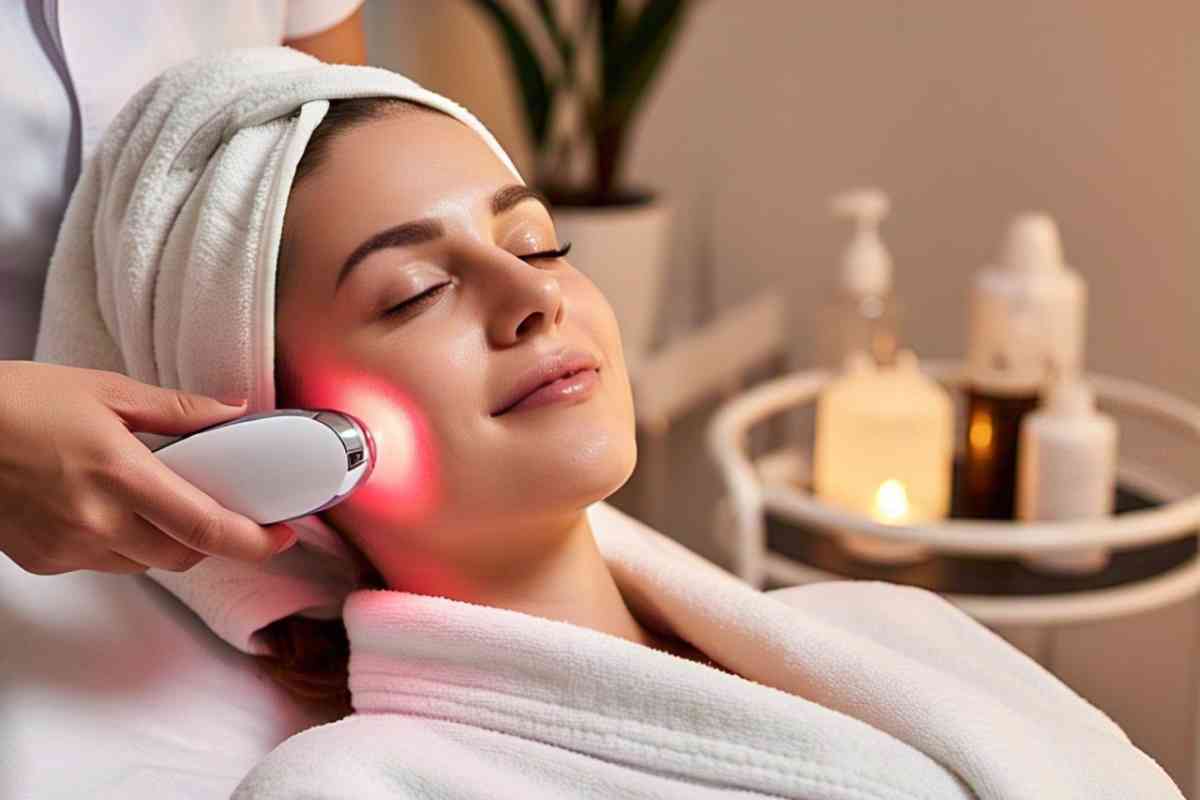
Thinking about trying red light therapy after dermaplaning? You’re not alone. Many people want to boost their glow, but timing matters.
Your skin needs the right care to avoid irritation and get the best results. In this guide, you'll learn when to start red light therapy, what to avoid, and how to heal your skin right.
Table of contents
Key Takeaways
Wait at least 24 hours after dermaplaning before using red light therapy to allow skin recovery.
Start with short red light therapy sessions to prevent overstimulation and irritation.
Red light therapy can soothe sensitive skin post-dermaplaning and enhance healing.
Avoid harsh exfoliants and active ingredients for a few days after both treatments to prevent irritation.
Consistent red light therapy sessions can help maintain smooth, glowing skin after dermaplaning.
What Is Dermaplaning and How Does It Work?
- Dermaplaning Exfoliates the Skin for a Smoother Look: Dermaplaning uses a surgical scalpel to gently exfoliate the skin, removing dead skin cells and fine peach fuzz, leaving the skin smoother and brighter.
- It Enhances Skin Texture and Gives a Glowing Complexion: By exfoliating the skin, dermaplaning improves texture and smoothness, giving you a more even and glowing complexion.
- A Professional Performs the Procedure Safely: A trained professional uses a sterilized scalpel to carefully glide over the face, removing dead skin and peach fuzz without harming the skin’s surface.
- The Results Last for Two to Four Weeks: After dermaplaning, your skin stays smooth and refreshed for two to four weeks as the skin naturally regenerates and new dead skin cells accumulate.
- Skin May Be Sensitive After Dermaplaning: Immediately after the procedure, the skin can feel sensitive and more prone to irritation, so it's important to protect it with sunscreen and gentle products.
Can Red Light Therapy Irritate Skin After Dermaplaning?
- Red light usually feels soothing after dermaplaning: Your skin becomes more sensitive after dermaplaning, but red light therapy is normally gentle. In most cases, it actually helps reduce irritation instead of causing it.
- Yellow light helps your skin feel calm and fresh: Yellow LED light (630nm) can ease redness and improve oxygen flow to your skin cells after dermaplaning. This makes your skin feel calmer and healthier.
- If your skin is already red, light therapy might make it worse: Some people may notice mild redness if their skin is already inflamed or irritated from dermaplaning. To stay safe, wait until your skin looks calm before starting light therapy.
- Red and blue light together are great for acne-prone skin: When used together, red light and blue light (470nm) can fight acne without irritating freshly dermaplaned skin. This combo is a good choice if you're dealing with breakouts.
- Most people don’t feel extra sensitivity from red light: Red light therapy often helps people with sensitive skin. But if your skin feels very sore after dermaplaning, it’s better to give it more time before trying any light treatment.
- Starting slow helps you avoid skin irritation: Always begin with short light therapy sessions to see how your skin reacts. If you notice discomfort, stop immediately and let your skin rest.

Is There a Risk of Overstimulation When Combining Both Treatments?
- Your skin becomes more sensitive after dermaplaning: Dermaplaning removes dead skin and peach fuzz, which makes your skin smoother but also more sensitive than usual. This sensitivity can make your skin react more strongly to red light therapy if used too soon after.
- Using both treatments too quickly can cause irritation: When you combine dermaplaning and red light therapy without enough time in between, your skin might feel irritated, red, or uncomfortable. This is because it's already delicate and needs a little break before adding more stimulation.
- Letting your skin rest first helps avoid problems: To keep your skin safe, it’s best to wait a little while after dermaplaning before starting red light therapy. This gives your skin time to calm down and lowers the risk of bad reactions.
- Lower light settings make the treatment gentler: You don’t have to skip red light therapy completely, just use a lower setting. Reducing the intensity can make it more comfortable for your freshly exfoliated skin.
- If your skin feels off, it’s better to skip the session: Always pay attention to how your skin feels. If it seems irritated or too sensitive, it’s smarter to skip red light therapy that day and try again later when your skin feels ready.
Who Should Not Use Red Light Therapy After Dermaplaning?
It’s important to allow the skin to recover before introducing red light therapy. Wait at least 24 hours after dermaplaning to use RLT.
This allows the skin to heal from the exfoliation and reduces the risk of irritation. After 24 hours, red light therapy can be used to enhance skin recovery and soothe any lingering sensitivity.
Can Red Light Therapy Worsen Any Conditions After Dermaplaning?
- Red light therapy can be too strong for skin right after dermaplaning: After dermaplaning, your skin is freshly exfoliated and more delicate than usual. Using red light therapy too soon can be too harsh and may cause more harm than good.
- If your skin is still red, red light can make it worse: When your face is already irritated or red from dermaplaning, red light therapy might make that redness even more intense instead of calming it down.
- Sensitive skin after dermaplaning can darken with light exposure: Right after exfoliation, your skin is more sensitive to light. Red light therapy, combined with sun exposure, can increase the risk of dark patches (hyperpigmentation) forming on your face.
- Red light can trigger skin issues like rosacea if used too early: If you have rosacea or other sensitive skin conditions, red light therapy might cause flare-ups or worsen the symptoms when used before your skin fully recovers from dermaplaning.
- Red light can dry out your skin if it’s not well cared for: Using red light therapy without properly moisturizing your skin can lead to more dryness or irritation, especially since your pores are open after dermaplaning.
- Waiting a few days makes red light therapy safer: To avoid problems, it’s best to wait until your skin has completely calmed down after dermaplaning before starting red light therapy. A little patience helps your skin heal better.
How Soon After Dermaplaning Can I Use Red Light Therapy?
- Wait 24 Hours Before Using Red Light Therapy: After dermaplaning, allow at least 24 hours for your skin to recover before using red light therapy. This gives your skin time to heal from the exfoliation.
- Give Your Skin Time to Settle: Your skin may be sensitive right after dermaplaning. Giving it a day to calm down before starting red light therapy helps avoid irritation and ensures better results.
How Often Should You Do Red Light Therapy After Dermaplaning?
- Ideal Frequency for Red Light Therapy After Dermaplaning: After dermaplaning, you can safely do red light therapy 2-3 times a week. This frequency is perfect for improving skin texture and promoting healing without overloading your skin.
- Consistency for Radiant Skin: If you're aiming to keep your skin glowing and radiant, consistency is key. Regular treatments ensure long-term results and help you maintain that healthy glow.
- Initial Sessions for Optimal Results: To maximize the benefits, aim for about 5-10 red light therapy sessions in the first few weeks. After this period, you can scale back the frequency as your skin starts showing improvement.
- Avoid Overdoing It for Better Results: Though red light therapy is beneficial, don’t exceed 3 sessions a week. This helps prevent potential irritation and ensures that you get the best results from your routine.
What’s the Best Time of Day for Red Light Therapy Post-Dermaplaning?
- Wait a Few Hours After Dermaplaning for Best Results: It's recommended to wait a few hours after dermaplaning before using red light therapy to allow your skin to calm down and avoid irritation.
- Evening Sessions Enhance Skin Recovery: Evening sessions are ideal as your skin is more relaxed, making it more receptive to healing overnight.
- Proper Timing Improves Skin Healing and Reduces Irritation: Using red light therapy at the right time can improve skin healing and minimize irritation after dermaplaning.
How Long Should a Session Last After Dermaplaning?
Keep red light therapy sessions to 10-20 minutes to avoid overstimulation. Longer sessions may irritate the skin, especially after dermaplaning.
It's recommended to use red light therapy 2-3 times a week after the initial recovery period, but adjust the frequency based on your skin's response.
Best Skincare Routine After Dermaplaning and Red Light Therapy
Gentle Cleansing
- Gentle Cleansing Protects Delicate Skin: After dermaplaning and red light therapy, your skin is more sensitive. Gentle cleansing helps remove oil and dirt without causing stress or irritation to the skin.
- Choose a Hydrating Cleanser for Soothing Care: Opt for a creamy or hydrating cleanser with ingredients like glycerin or aloe. Look for products labeled "sulfate-free" or "for sensitive skin" to ensure a gentle and soothing experience.
- Avoid Harsh Scrubbing and Extreme Water Temperatures: Don't scrub your face harshly after treatments. Use lukewarm water instead of hot or cold to avoid irritation and ensure your skin stays calm and balanced.
- Switch to a Gentler Cleanser if Skin Feels Tight: If your skin feels tight or uncomfortable after cleansing, it’s a sign your cleanser may be too harsh. Choose a gentler product to keep your skin comfortable and healthy.

Hydrating Toner or Essence
- Using a toner helps your skin hold on to moisture and stay calm: A hydrating toner is great after dermaplaning and red light therapy because it helps your skin lock in moisture and reduces any irritation. Ingredients like hyaluronic acid or rose water calm your skin and support recovery.
- An essence gives deeper hydration when your skin feels extra dry: Essences are thicker than toners and give your skin an extra boost of moisture. They’re great when your skin feels tight or sensitive after exfoliating. Using one can help your skin feel soft and refreshed again.
- You don’t need both, just use what feels best on your skin: After cleansing, go with either a toner or an essence,whichever feels more soothing. If the essence hydrates enough, you can skip toner. The goal is comfort, not layers.
- Don’t use too many products after your treatment: After dermaplaning and red light, your skin needs care,not a lot of layers. Keep it simple. Just one good hydrating product is enough to help your skin heal and stay glowing.
Soothing Serum
- Soothing serum quickly calms redness and hydrates skin: A soothing serum helps calm your skin, reduce redness, and bring back moisture. Ingredients like niacinamide, centella asiatica, and panthenol are perfect for this. These work great after both dermaplaning and red light therapy to keep your skin calm and hydrated.
- Soothing serum protects your skin from getting dry or irritated: Right after these treatments, your skin can feel dry or sensitive. Soothing serums help prevent that by reducing inflammation and speeding up the healing process.
- Using one or two soothing serums is enough to avoid irritation: If you use too many products at once, your skin can get overwhelmed. Sticking to one or two soothing serums is the best way to keep your skin safe and avoid extra sensitivity.
- Applying soothing serum right after cleansing helps it work better: For best results, apply your serum right after you cleanse or use an essence. This helps your skin absorb it better before adding thicker creams or oils on top.
- Soothing serum feels light but gives strong results: Even though it’s light and doesn’t clog your pores, a soothing serum works hard. It locks in moisture, calms irritation, and supports healing after both treatments.
Nourishing Moisturizer
- Nourishing moisturizer keeps your skin soft after dermaplaning: A nourishing moisturizer locks in moisture and helps your skin stay soft and smooth after dermaplaning. It prevents tightness and dryness by giving your skin what it needs right after exfoliation.
- It helps your skin heal after red light therapy too: Your skin barrier gets weak after red light therapy, and a good moisturizer helps repair it. This step is important to calm your skin and avoid irritation or redness.
- Using it every day keeps your skin balanced and healthy: If you use a nourishing moisturizer every day, your skin stays calm, comfortable, and well-hydrated. It stops dryness before it starts and helps keep the results of your treatments looking good.
- Reapply gently without hurting your skin: To put on more moisturizer during the day, spray a little water on your face first, then apply it gently in upward circles. This keeps your skin fresh without causing irritation.
- Use one with SPF during the day for extra protection: A moisturizer with SPF protects your skin from the sun while keeping it hydrated. It’s a smart way to care for sensitive skin after treatments.
- Moisturize twice a day to avoid flakiness: You should use your nourishing moisturizer in the morning and at night,or any time your skin feels dry. This helps avoid flaky patches and keeps your face looking smooth and healthy.
SPF Protection
- Your Skin Needs SPF After Treatments: After dermaplaning and red light therapy, your skin becomes more sensitive to the sun. Applying sunscreen is crucial to avoid sun damage and irritation.
- Use SPF 30 or Higher for Protection: Make sure to apply sunscreen with at least SPF 30 the morning after your treatment. A higher SPF offers better protection against harmful UV rays.
- Mineral Sunscreen is the Best Choice: Opt for mineral sunscreens with ingredients like zinc oxide or titanium dioxide. These are gentler on your skin, providing effective protection without causing irritation.
- Reapply SPF Every Two Hours Outdoors: For continuous protection, reapply sunscreen every two hours if you’re outside. This ensures you stay shielded from harmful UV rays all day long.
- Skipping SPF Can Undo Your Treatment Results: Skipping SPF can cause your skin to lose the smooth and clear results from dermaplaning and red light therapy. UV exposure can also lead to irritation or dark spots.
- Daily SPF Helps Maintain Treatment Benefits: Daily use of SPF not only protects your skin but also helps maintain the benefits of your treatments for a longer period, keeping your skin healthy and glowing.
Red Light Therapy or Healing Treatments
- Safe Use of Red Light Therapy After Dermaplaning: It’s safe to use red light therapy after dermaplaning as long as your skin isn’t too irritated. It calms your skin and supports the healing process, making it the perfect treatment after exfoliation.
- Boost Skin Healing with Hyaluronic Acid Masks: Using a thermotherapy mask with hyaluronic acid before red light therapy can improve collagen production and speed up skin healing, giving your skin better texture and glow.
- Start Slow with Red Light Therapy if You Have Sensitive Skin: If you have sensitive skin, begin with shorter red light therapy sessions. This helps prevent overstimulation and allows your skin to adjust without irritation.
- Moisturize After Red Light Therapy: After using red light therapy, make sure to moisturize your skin. This locks in hydration and keeps your skin smooth and soothed after the treatment.
Avoid Harsh Exfoliants and Active Ingredients
- Skip Harsh Exfoliants Like AHAs, BHAs, and Retinoids: Avoid using strong exfoliants like AHAs, BHAs, and retinoids for 3–5 days after dermaplaning and red light therapy, as they can irritate your skin and cause discomfort.
- Stay Away from Glycolic Acid and Salicylic Acid: These ingredients, along with products with strong fragrances, can cause irritation and should be avoided post-treatment.

FAQs
Can Red Light Therapy Help Speed Up Skin Recovery After Dermaplaning?
After dermaplaning, red light therapy can help speed up recovery. You can begin using it 24 hours post-treatment. Red light therapy reduces inflammation, soothes redness, and calms irritation. It also boosts collagen production, promoting faster and smoother healing, while supporting the skin barrier for better recovery.
Does Red Light Therapy Have Any Effect on Post-Dermaplaning Sensitivity or Redness?
After dermaplaning, your skin may feel sensitive and appear red. Red light therapy can help reduce inflammation, lowering redness and irritation. It also boosts collagen production, promoting faster skin regeneration and aiding recovery. Using red light therapy after dermaplaning can enhance your skin's healing process.
Can Red Light Therapy Be Used on All Skin Types After Dermaplaning?
Red light therapy is safe for all skin types after dermaplaning, but individual needs should be considered. For sensitive skin, it can soothe redness and reduce irritation, promoting faster healing. Oily skin benefits from red light therapy by controlling oil production and improving texture. However, avoid it if you have severe acne or open wounds until healing is complete. While you can use red light therapy immediately after dermaplaning, waiting 24 hours for optimal healing is recommended.
Are There Any Long-Term Benefits of Combining Red Light Therapy and Dermaplaning?
Combining red light therapy with dermaplaning boosts collagen production. Dermaplaning removes dead skin cells, allowing red light therapy to penetrate deeper and stimulate collagen growth. This improves skin texture, making it smoother and more even. Red light therapy also enhances dermaplaning results, maintaining a radiant complexion and reducing signs of aging, like fine lines and wrinkles. Together, these treatments promote healthier, youthful-looking skin.


